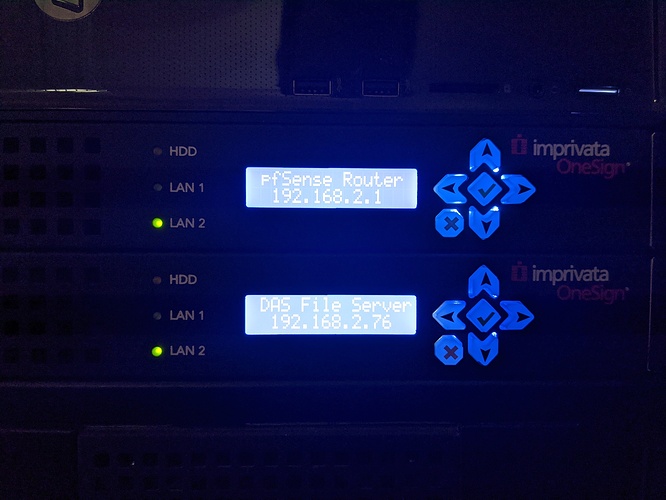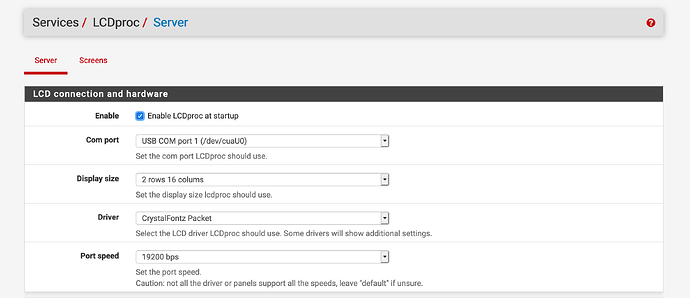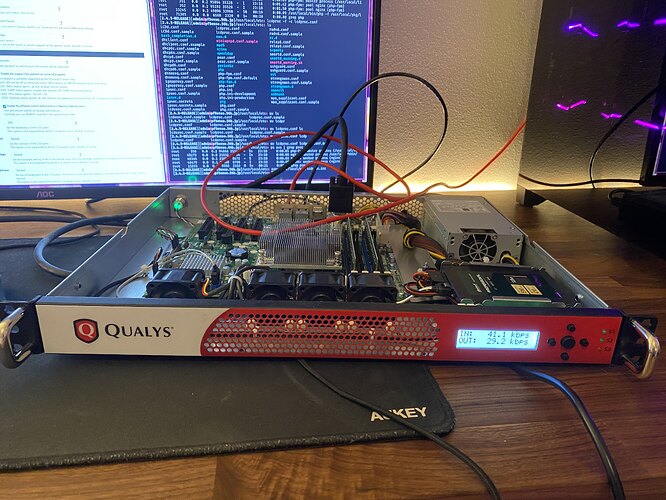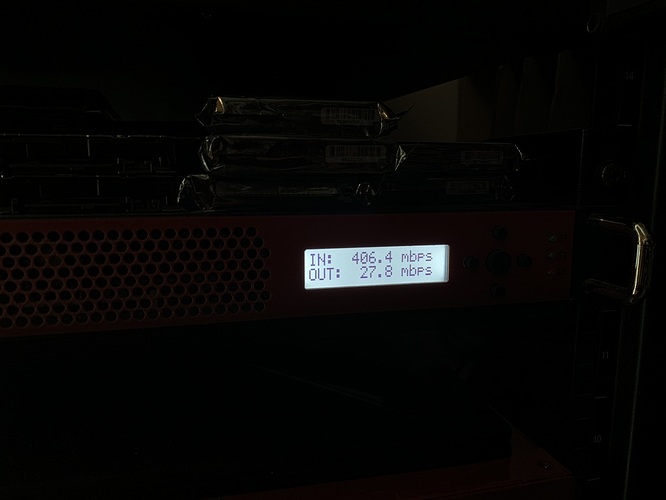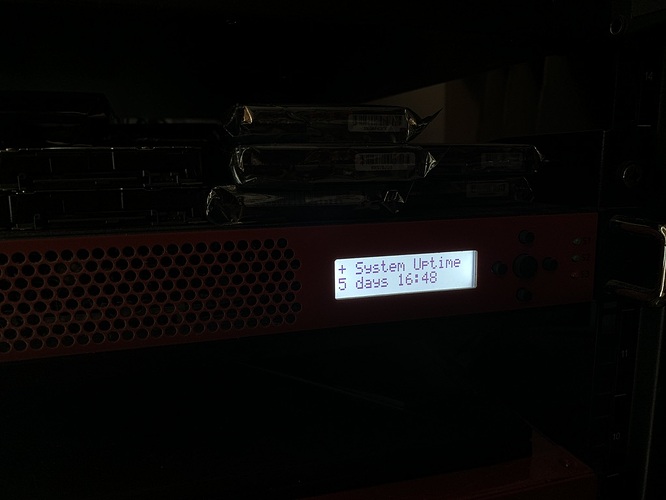@adamsir2 Thank you
What are you doing with the 4 in your rack?
@shnax My original intent was to have a proxmox cluster segmented from my main network for testing. 1 for pfsense(runs great and imo more secure than setting up a vlan) and the other 3 for the proxmox nodes. My main issue was getting each node to join the cluster so right now they’re powered off and in the closet.
So as I said before for the time being I’m making my 1u chasis into storage only DAS…would a pico psu setup draw significantly less than the typical server psu that comes in these things? I’ll be running between two and four sata hdd’s in it.
I put a kill-a-watt on it with the 1u server psu (2 drives) and it’s pulling about 20 watts. The pico psu option + power brick near as I can tell will set me back about $50 by the time I pay for taxes so I’m not sure if the ROI is worth it for something will run 24/7.
I THINK a pico would aid in using less power but I’m not too sure. I’ve got one somewhere in the closet so if I can find it I’ll try it out and let you know.
Thanks no hurry but I’d be interested. Probably not worth it would be my guess unless you already had one.
Got it all up and running janky paper clip in 20 pin connector and all. Shifted my MotionEye over to a 1.5 TB drive and got a couple others up and mounted, changed the fstab so I’m probably good to go. I’m totally not going to reboot to see if I killed it on fstab.
For anyone interested, the os201 servers can hold two supermicro mcp 220 00044 0n 2x2.5” drive caddies. One has all the holes on the left side and the right side has only two holes. Figured dual ssd on one and dual hard drives in the other. Also,haven’t tried it yet, but I think the pcie to dual ssd adapter I have would fit. I don’t have a riser so I’m not entirely sure. But that’s on order two.
Sorry for the super late update. Life. Amiright? Haven’t found the pico yet. But I have a few boxes left in storage I’m hoping it’s in. Fingers crossed.
Just thought I would share a picture of the crystalfontz displays I got running on the front of the Onesign 201’s. It’s a start.
Currently I have them plugged in both from lan 2 rj45 to my switch. If I want to use ipmi do I plug in another rj45 to each of the ipmi ports and run those to the switch as well?? Or do I just configure from the bios to use the IP address I want to use for this?
that looks awesome… I’m really hoping there’s some more stock on eBay soon, with some reasonable shipping prices to Canada. All I see are OS200s
Yes, IPMI you’d plug in normally.
How did you get the display working? Did you use the pfsense plugin?
The displays are static. I was happy just getting them to display something other than the factory setting displaying “Imprivata Onesign”. Sorry my post was misleading, but I had heard that some of the crystalfontz displays had custom firmware that couldn’t be changed, so I was happy.
By plug in normally do you mean I should be able to configure ipmi directly from the bios with just the 1 rj45 plugged into lan 2?
Right, but how did you change it?
I ended up using a harddrive with a windows 10 install on it. Make sure the serial COM port 2 is enabled in the bios.
Cftest software. You have to choose the baud rate first, 19200, then go back, and choose COM2, this was where I was messing up. You should be connected to the display at this point and the Module/Display Type will populate. Packet log will also indicate you are connected.
Clicking LCD display will pull up the lines for input. Enter what you want it to display. Click Send for each line, the display should update. Change the Contrast and brightness at this point.
Afterwards you need to Send Packet command 4 which saves the display as the boot state. Now you should be able to reboot and the LCD display will remain the way you like.
Here is a screenshot.
With Crystalcontrol2 in Windows, I could get live display info but as soon as I pulled the HDD out it just became static again in Ubuntu.
I had zero luck with Ubuntu trying to connect to the displays at all, but now that the displays are set they work, but they are static. The Onesign 201’s come with the 633 serial versions of the LCD’s.
I purchased 2 iBoss and 1 NX2400, hopefully I get some salvageable parts inside lol
Looking forward to updates!
For those interested, I figured out how to get the screen working in pfSense for the QualysGuard and presumably the OneSign (and any other appliance that uses a CrystalFontz 533/633 display):
- Go to
System -> Package Mangerand install LCDproc if you haven’t already. - SSH into pfSense and choose option 8 to drop into a shell and use vi or ee to edit
/usr/local/pkg/lcdproc.inc - Search for the
CFontzPacketcase statement and modify it to match below:
case "CFontzPacket":
$config_text .= "[{$lcdproc_config['driver']}]\n";
$config_text .= "Device={$realport}\n";
$config_text .= "Model=633\n";
$config_text .= "Size={$lcdproc_config['size']}\n";
$config_text .= set_lcd_value("contrast", 1000, 350);
$config_text .= set_lcd_value("brightness", 1000, 1000);
$config_text .= set_lcd_value("offbrightness", 1000, 50);
$config_text .= "OldFirmware=yes\n";
$config_text .= "Reboot=yes\n";
$config_text .= "USB=yes\n";
break;
The important parts being:
- changing the model to 633 (even if you have a 533 display!)
- changing NewFirmware=yes to OldFirmware=yes
- adding USB=yes (assuming your display is USB)
-
Go to
Services -> LCDprocand adjust the settings to match below (you might need to change the USB or serial COM):
-
Save and enable any screens you want in
Services -> LCDproc -> Screens
This is super cool thanks for sharing
Yea, unfortunately the LCDproc CFontzPacket driver doesn’t support the GPIO outputs that control the leds. The old CFontz633 driver did but it’s long been unmaintained and fails to build (hence why setting it as the option in pfSense causes the LCDproc service to fail to start, the driver isn’t actually included in the package anymore).
The packet data to control them in on page 43 of https://www.crystalfontz.com/products/document/3681/CFA533TFHKUv1.4.pdf if someone wants to write some code to control them ![]()

